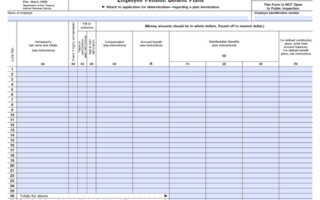Form 982 allows individuals to report and exclude certain discharged debts from their gross income. It also allows individuals to make the election to reduce the basis of depreciable property or qualified real property business indebtedness in order to reduce certain tax attributes either dollar for dollar or 331/3 cents per dollar.
What is Form 982?
Form 982 is a form used by taxpayers to report the exclusion of discharged indebtedness from gross income, and the consequent reduction of certain tax attributes such as an NOL carryover, general business credit, minimum tax credit, capital loss, passive activity loss, basis of property, or foreign tax credit. It may also be used to exclude from gross income amounts of income attributable to the transfer of property. The election to reduce the basis of depreciable property must be made on a timely filed return and may be revoked only with the consent of the IRS. Form 982 is filed with the federal income tax return for the year the income is excluded, and should take into account any exclusions based on qualified principal residence indebtedness or when the taxpayer is insolvent.
IRS Form 982 – Who Needs to Fill It Out?
Form 982 must be filled out by individuals who have excluded an amount of discharged indebtedness from their gross income under certain circumstances as described in Section 108 of the United States Code. This form must be filed with your federal income tax return for the year a discharge of indebtedness is excluded from your income. Additionally, if you timely filed your tax return without making either election, you can still make either the election to reduce the basis of depreciable property or the election regarding the discharge of qualified real property business indebtedness by filing an amended return within 6 months of the due date of the return (excluding extensions).
Step-by-Step: Form 982 Instructions For Filling Out the Document
Follow the instructions on Form 982 for the amount of discharged indebtedness that you can exclude from gross income. If you are filing for qualified principal residence indebtedness, check the box on line 1e. Other debts such as car loan or credit card debt should be filed under line 1a (title 11 cases) or line 1b (insolvency). Lines 2 and 10a will differ depending on the type of discharge from the debt, while Part I is used to indicate why any amount received from the discharge of indebtedness should be excluded from gross income and the amount excluded. Part II of Form 982 is also needed to report your reduction of tax attributes in the following order: NOLs, general business credit carryover, minimum tax credit, net capital losses, property basis, passive activity losses and credits, and foreign tax credit carryover. Lastly, use Part III to exclude income attributable to a transfer of property under section 1081(b).
Below, we present a table that will help you understand how to fill out Form 982.
| Instructions for Form 982 | Details |
|---|---|
| Excluding discharged indebtedness | Refer to Form 982 for the amount to exclude from gross income |
| Qualified principal residence indebtedness | Check the box on line 1e |
| Other debts | File under line 1a (title 11 cases) or line 1b (insolvency) |
| Part I | Indicate why the amount received should be excluded from gross income |
| Part II | Report reduction of tax attributes |
| Part III | Exclude income from a transfer of property under section 1081(b) |
Do You Need to File Form 982 Each Year?
Generally, discharged debt must be included in your gross income, but under certain circumstances it can be excluded. For this, you must file Form 982 with your federal income tax return for the year of the discharged debt, and use Part I to indicate why any amount should be excluded, and Part II to report the reduction of your tax attributes in the specified order. Part III should also be used to exclude income attributable to the transfer of property. If you make the election for qualified real property business indebtedness, or to reduce basis of depreciable property, you must do this on a timely filed return (including extensions). If not, you can make the election on an amended return within 6 months of the due date of the return.
Download the official IRS Form 982 PDF
On the official IRS website, you will find a link to download Form 982. However, to make it easier for you, we are providing the link in our article, which comes directly from the official irs.gov website! Click to download: Form 982
Sources:




